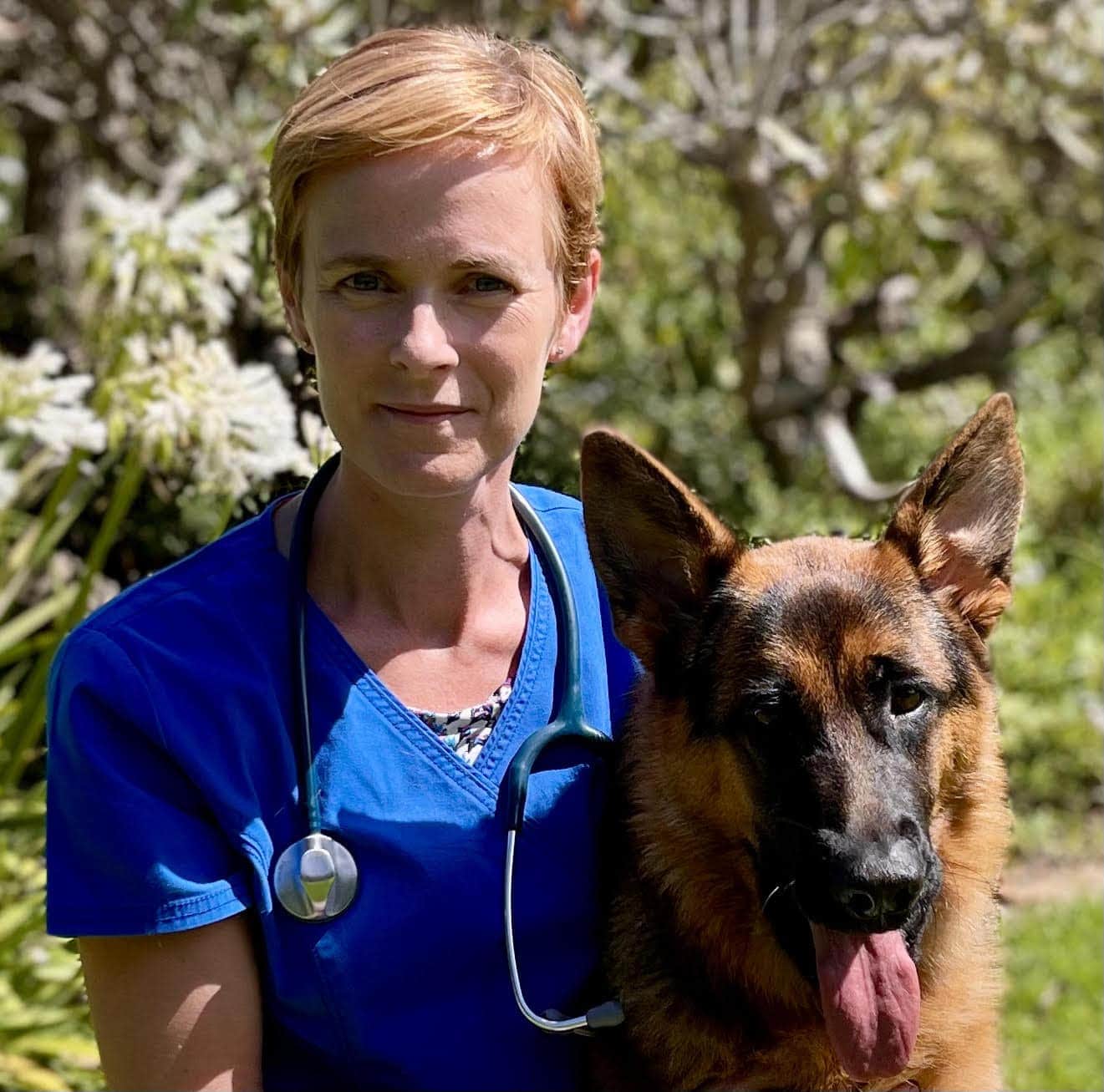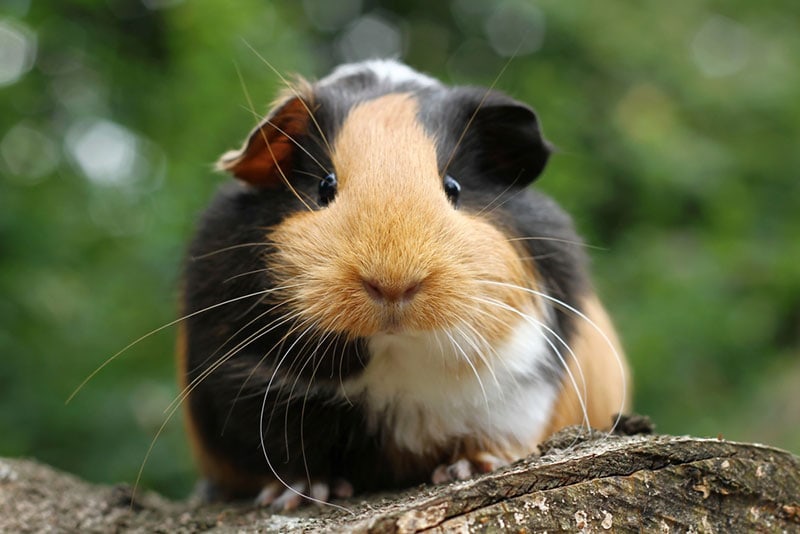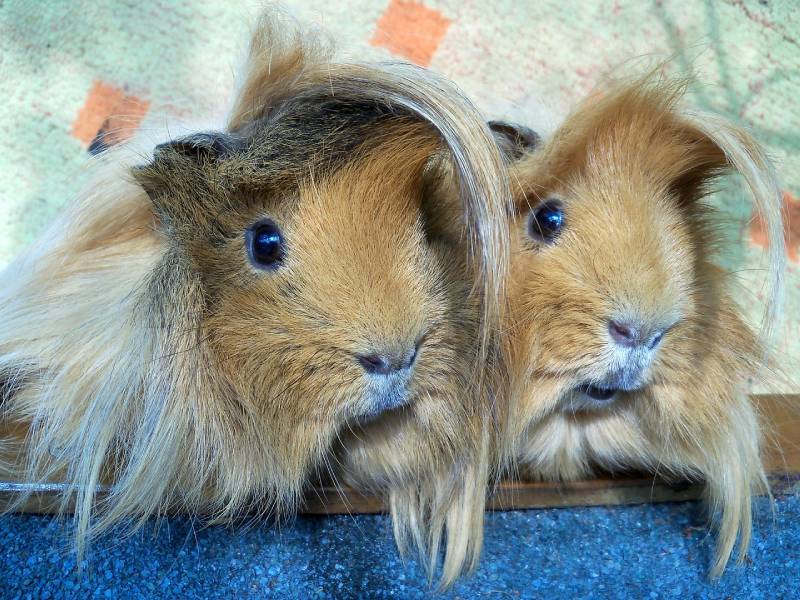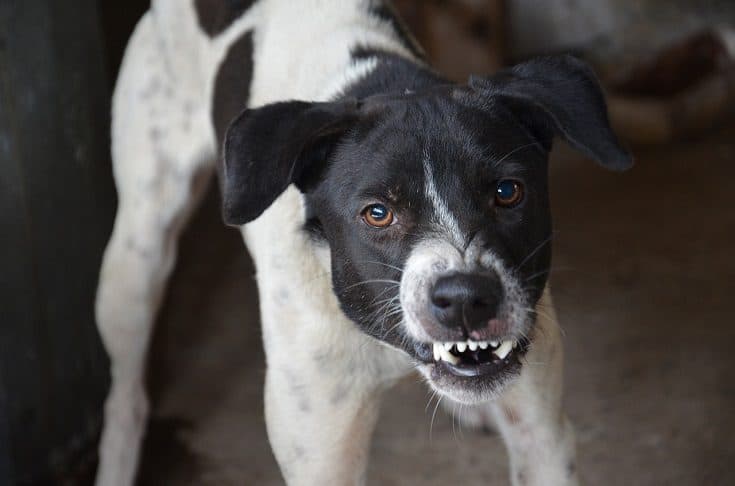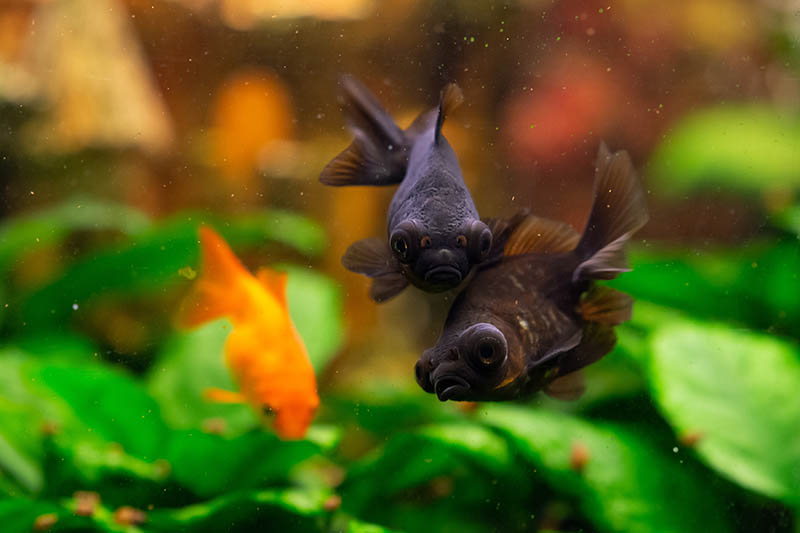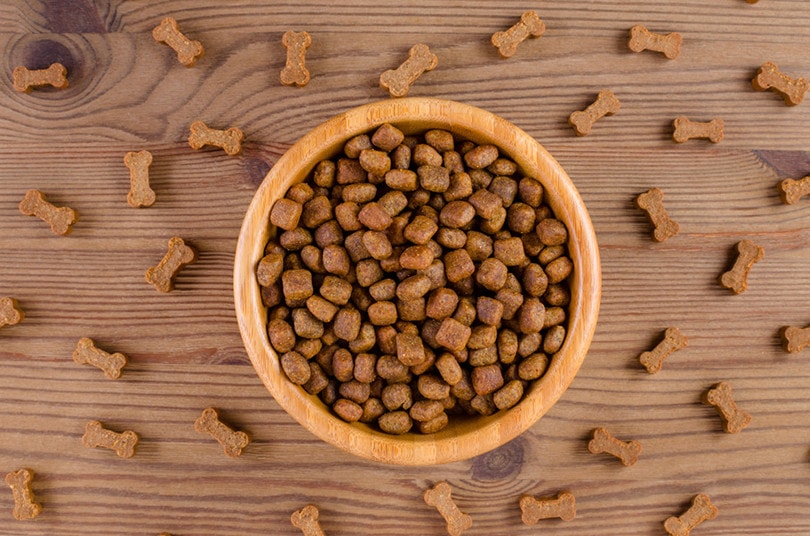Can Guinea Pigs Eat Bell Peppers? Vet Approved Nutrition Facts & FAQ
Updated on
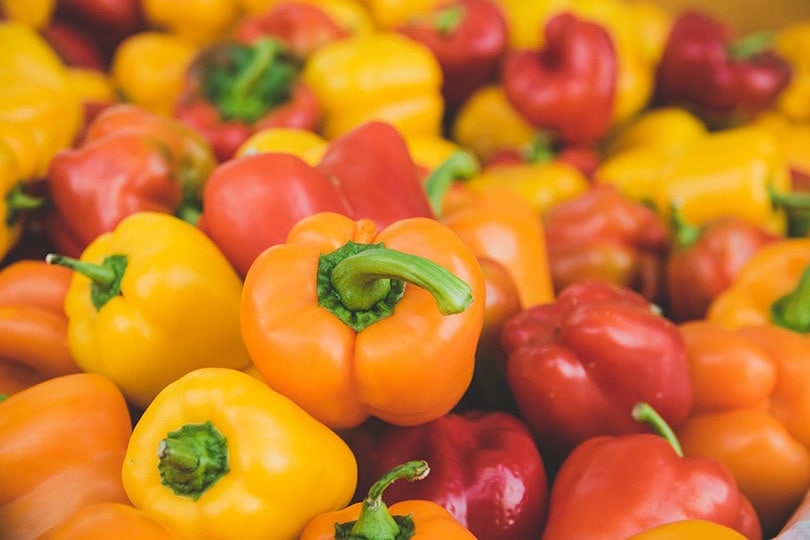
Feeding your guinea pig a proper diet is key to keeping them happy and healthy. The majority of a guinea pig’s diet will consist of hay and commercial pellets, but these cute little herbivores can also be given limited amounts of fruits and vegetables.
As a guinea pig parent, you do need to make sure that you are feeding the right foods, because there are some out there that can pose a danger to your pet. As far as bell peppers go, any color can be served to your guinea pig as a tasty treat as long as you remove the seeds and stem.
Keep reading to learn more about the health benefits of bell peppers and how to ensure your guinea pig is being fed the healthiest diet possible.
Bell Pepper Health Benefits
Bell peppers are native to Mexico, Central America, the Caribbean, and northern South America. The most common colors of bell peppers include green, yellow, orange, and red but there are other colors depending on the variety, like brown, white, lavender, and dark purple.
Raw bell peppers contain approximately 92% water, so they are great for hydration. They are also rich in several key vitamins including vitamin C, vitamin K1, vitamin E, vitamin A, folate, and potassium. They also contain a moderate amount of carbohydrates and very small amounts of protein and fat.
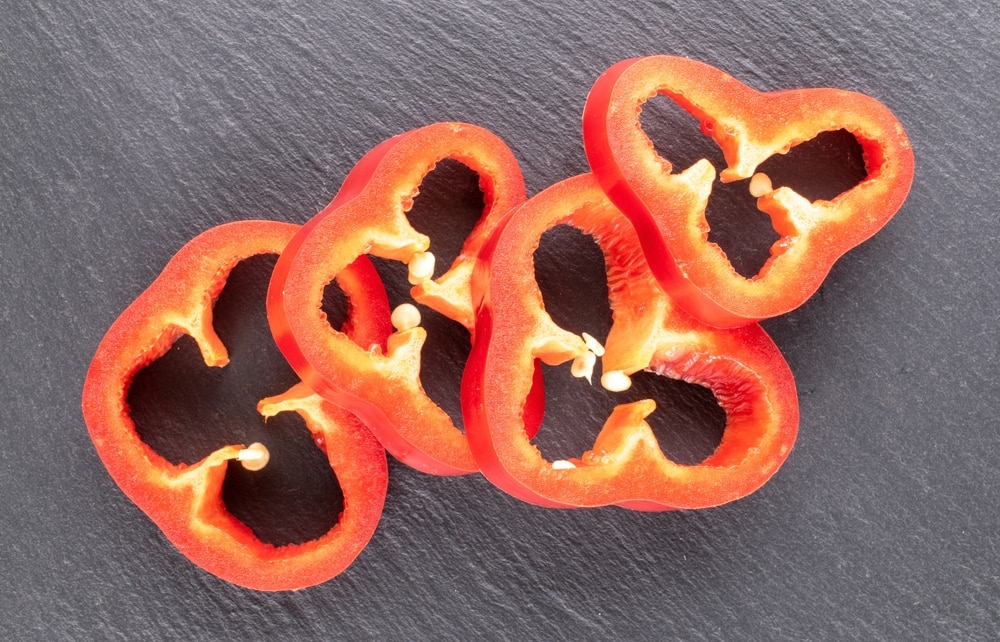
Nutrition Facts for 3 oz of Raw Red Bell Pepper
| Calories: | 26 |
| Water: | 92% |
| Protein: | 1 gram |
| Length: | 6 grams |
| Length: | 4.2 grams |
| Length: | 2.1 grams |
| Length: | 0.3 grams |
Are Bell Peppers Good for Guinea Pigs?
Bell peppers are among the safest vegetables that you can add to your guinea pig’s diet. Like any fruit or vegetable, they should only be offered in moderation. While the entire pepper is edible and safe for guinea pigs, most owners only feed the flesh and avoid the seeds and stem since many worry of a potential choking hazard.
Peppers of any color are suitable for guinea pigs, and they are especially healthy since they are rich in vitamin C, which is essential for these little guys to get in their diet.
New foods should be introduced slowly and in very small amounts. If your guinea pig tolerates bell peppers well, the Humane Society of the United States advises that two half-inch slices per day is suitable to feed an adult guinea pig1.
Any questions or concerns about your guinea pig’s nutritional needs should be directed to your veterinarian.
What Should My Guinea Pig’s Diet Look Like?
It’s incredibly important to provide the proper balance of hay, pellets, fresh vegetables, and limited fruit in your guinea pig’s diet to ensure they live a long, happy life. Like humans, guinea pigs cannot produce their own vitamin C, so they do require vitamin C-rich foods as part of their diet. Here’s an overview of what they need and why they need it.
Hay
Hay is an absolute essential for all guinea pigs because it promotes proper digestion and helps wear down their continuously growing teeth. High quality timothy hay, orchard grass hay, and oat hay are all fantastic options. Since alfalfa hay is rich in calcium, it should only be fed in limited amounts occasionally. Diets too high in calcium can result in painful bladder stones.
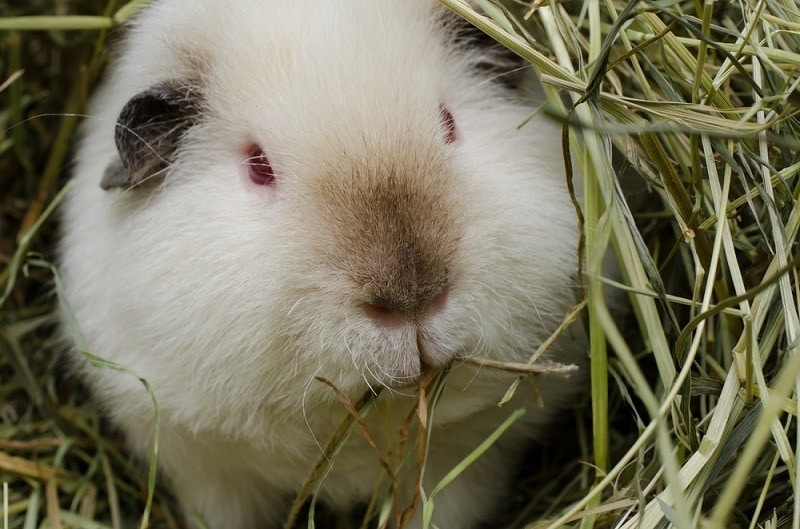
Pellets
Guinea pigs cannot produce vitamin C so they must get this essential vitamin via their diet. In the wild, they spend a lot of time grazing on grasses, herbs, and other vitamin C rich foods found in their natural habitat. A pet guinea pig needs commercial pellets that are formulated for their specific dietary needs, this way you can ensure they are eating a nutritionally balanced diet. It’s important to only buy pellets that are made specifically for guinea pigs and always follow the feeding instructions from the manufacturer. Usually around a tablespoon of pellets is sufficient. Proper storage of pellets is also important as vitamin c degrades over time.
Fruits and Vegetables
Both fruits and vegetables can be offered daily as supplementation to hay and pellets. Just like for humans, fresh, organic produce is the best option if possible. Any food high in calcium should only be fed in small amounts on occasion. Put a stricter limit on fruits and anything higher in natural sugars and carbohydrates. Feeding new food items to your guinea pig can cause gastrointestinal upset, so be sure to introduce anything new very slowly so that you can make sure they tolerate it well.
- Bell peppers
- Romaine lettuce
- Carrots (with or without tops)
- Broccoli (occasionally)
- Cauliflower leaves and stems
- Artichokes
- Celery
- Beetroot
- Cilantro
- Cabbage
- Basil
- Spinach (high calcium)
- Kale (high calcium)
- Collard greens (high calcium)
- Parsley (high calcium)
- Dill leaves (high calcium)
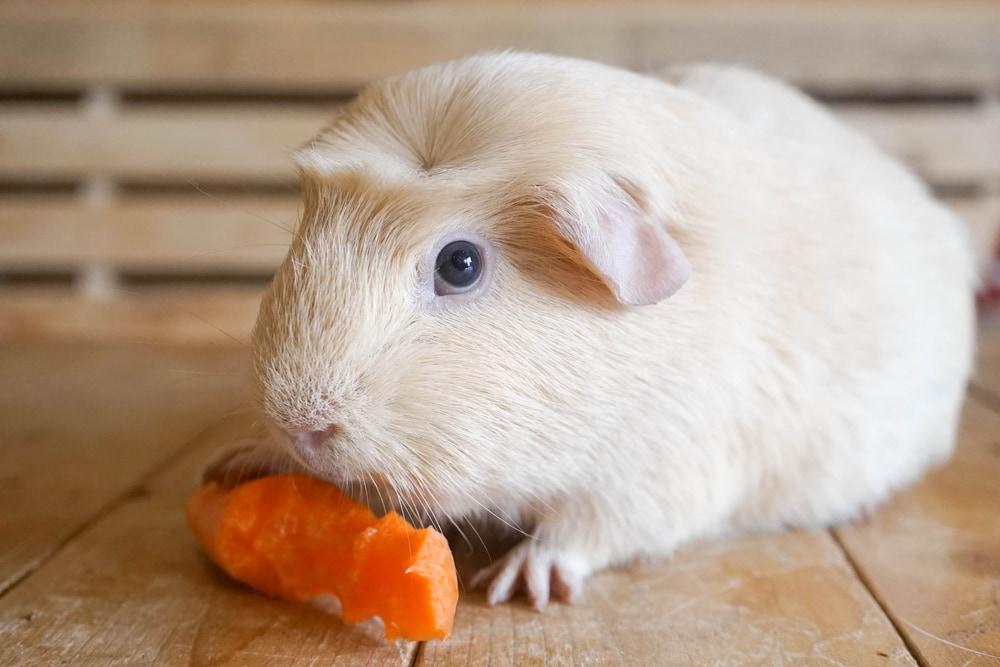
- Apples
- Bananas
- Strawberries
- Raspberries
- Blackberries
- Blueberries
- Kiwi
- Papaya
- Peaches
- Nectarines
- Cantaloupe
- Cherries
- Melon
- Pineapple
- Mango
- Apricots
Fresh, Clean Water
Fresh, clean water should be always available for your guinea pig. Make sure to clean out their water bowl or bottle frequently to prevent bacteria and other contaminants in the water. Bowls are typically the easiest way for guinea pigs to drink and heavy, ceramic bowls work best since they are much more difficult to move or tip over.

What Foods Should I Avoid Feeding My Guinea Pig?
Like with any pet, there is going to be food that you should avoid feeding your guinea pig and so it’s also very important that you know what to avoid.
- Onions
- Garlic
- Leeks
- Mushrooms
- Chocolate
- Nuts
- Seeds
- Corn kernels
- Rhubarb
- Peanut butter
- Dairy
- Chocolate
- Bread
- Pasta
- Meat
- Grass treated with weed killers or fertilizer
- Houseplants
Conclusion
A guinea pig requires a balance of hay, commercial pellets, and fresh fruits and vegetables as part of their daily diet. They can eat bell peppers of any color, and they are an excellent source of vitamin C, which is essential for guinea pigs since they cannot make their own. You should always discuss any dietary concerns with your veterinarian and be very cautious about introducing new foods into your pet’s diet.
Read Also:
Featured Image Credit: KaiPilger, Pixabay
